Abstract
OBJECTIVES: The generally agreed view is that there is no ideal shift system, and that most systems will have both advantages and disadvantages. As such, attention has been placed on trying to identify good and bad features of shift systems, with a view to minimising the possible ill health as a consequence of shiftwork. The present study focuses on the duration of the shift and looks at the implications for individual health, wellbeing, and alertness during the shift of extending the shift from the traditional eight hours to 12. METHODS: Two groups of chemical workers, one working 12 hour shifts and the other working eight hour shifts, took part. All completed a modified version of the standard shiftwork index (SSI), a set of self reported questionnaires related to health and wellbeing. RESULTS: The two groups did not differ on most outcome measures, although the differences that did exist suggested advantages for the 12 hour shift workers over the eight hour shift workers; with the notable exception of rated alertness at certain times of day. CONCLUSIONS: The results are explained in terms of the design of the 12 hour shift system and the specific sequencing of shifts that seem to minimise the potential for the build up of fatigue. Although the current data moderately favour 12 hour shifts, a cautionary note is sounded with regard to the implications of the alertness ratings for performance and safety.
Full text
PDF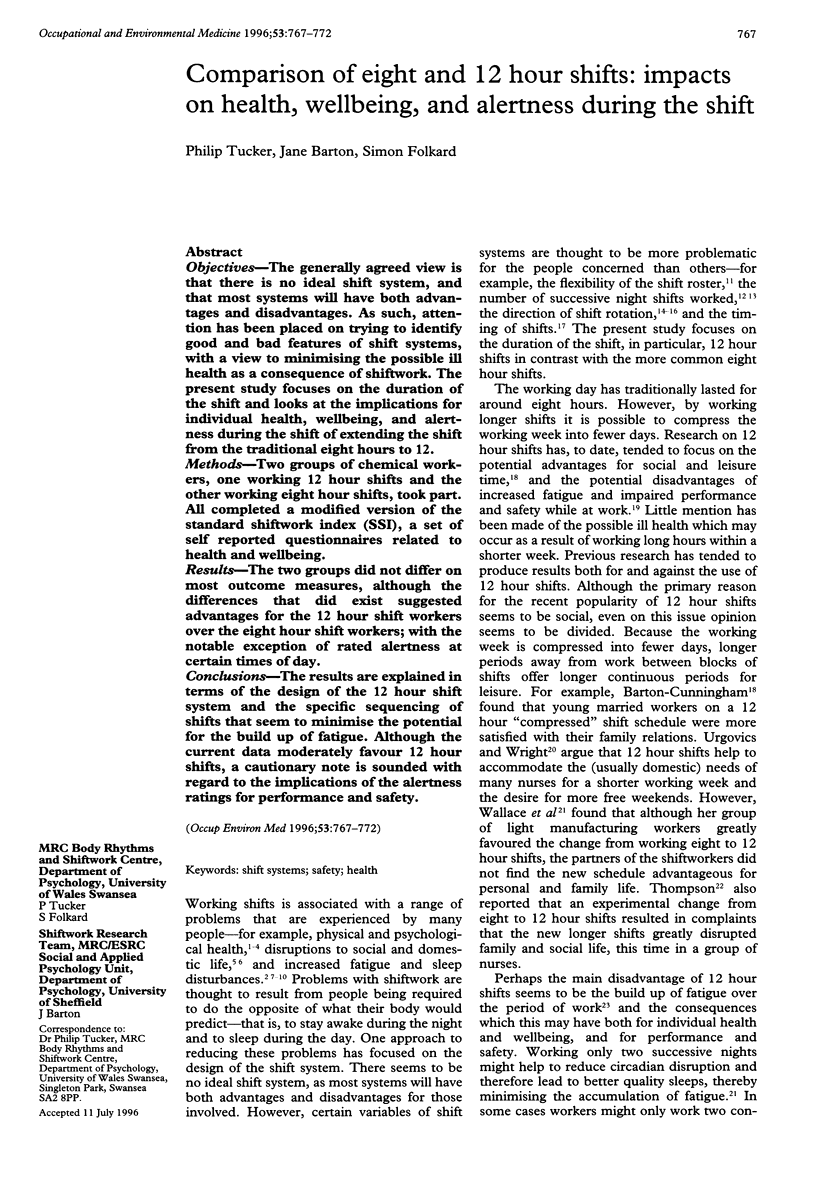
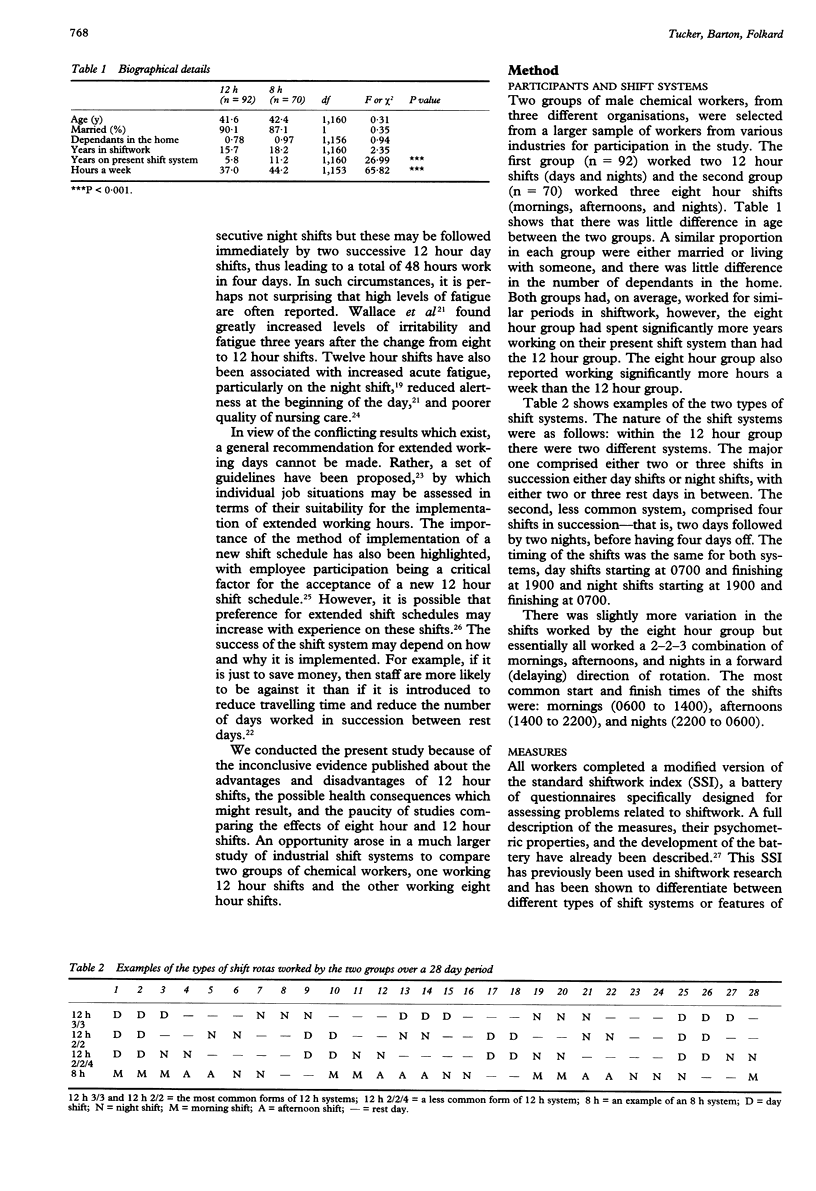
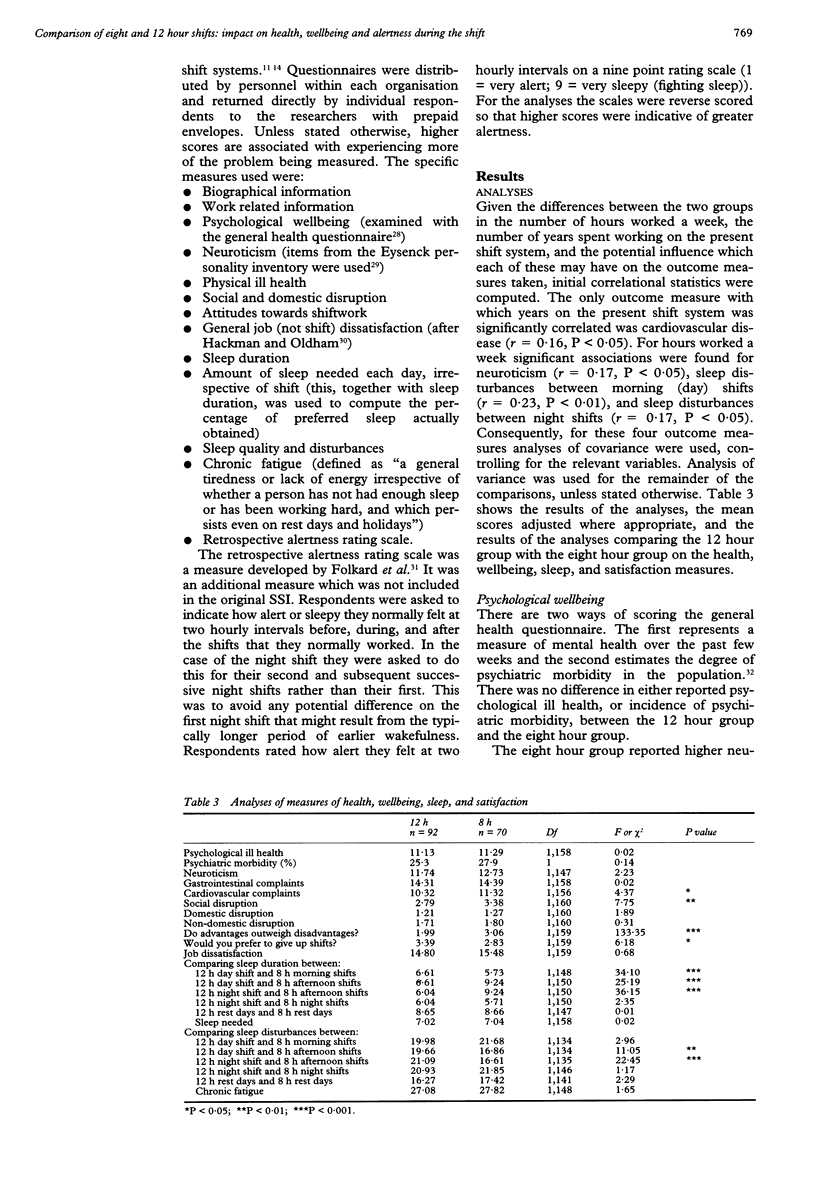
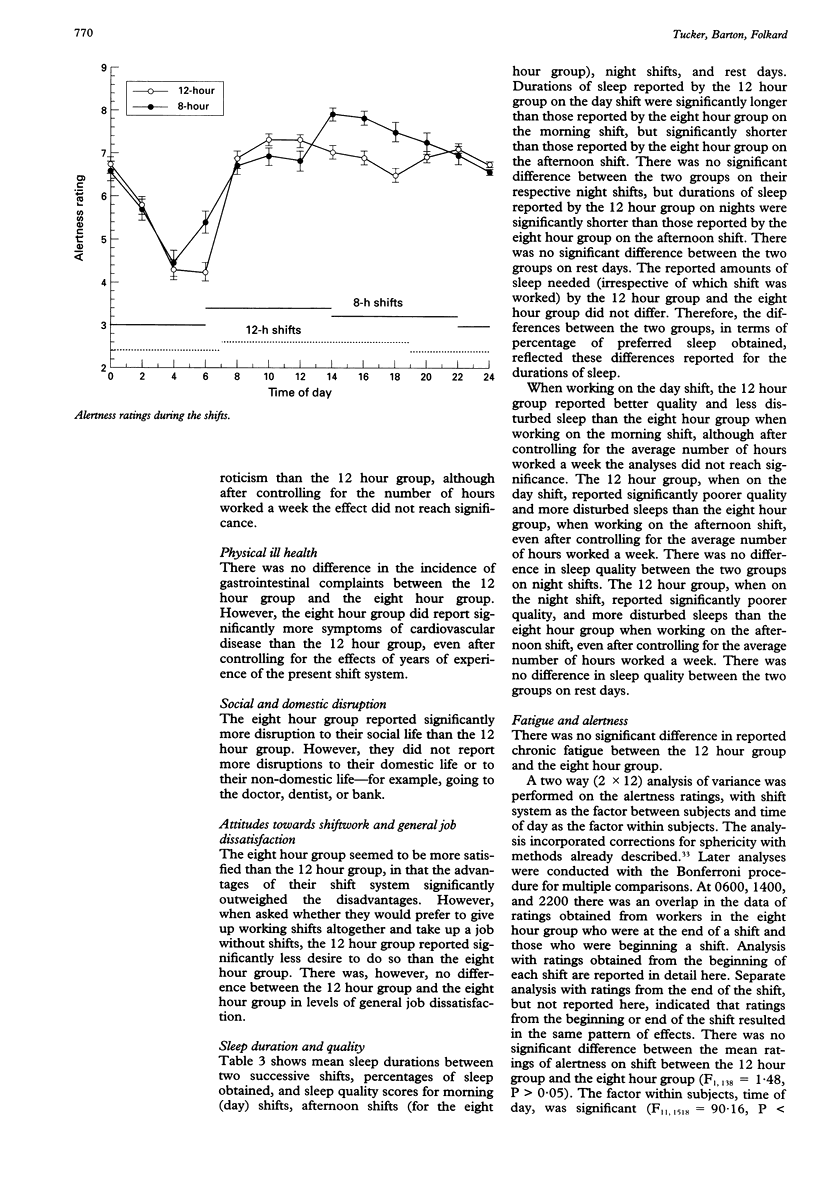
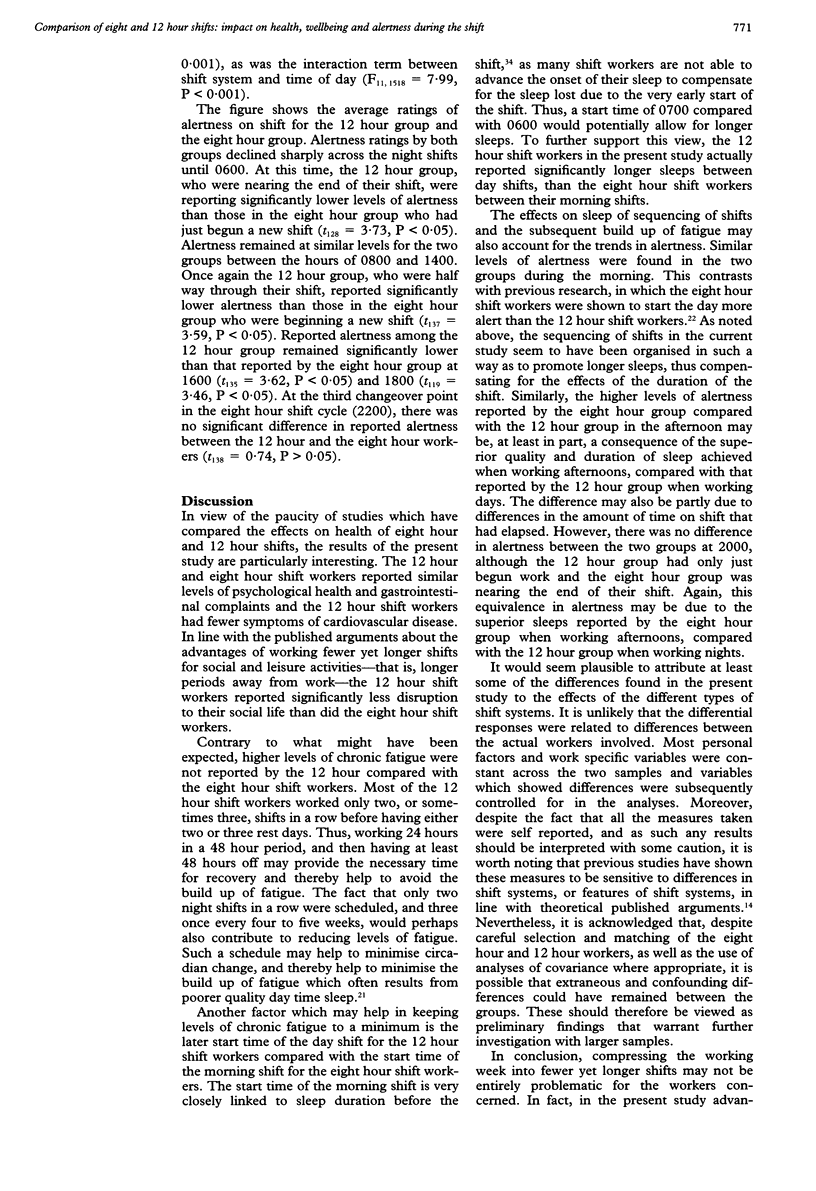
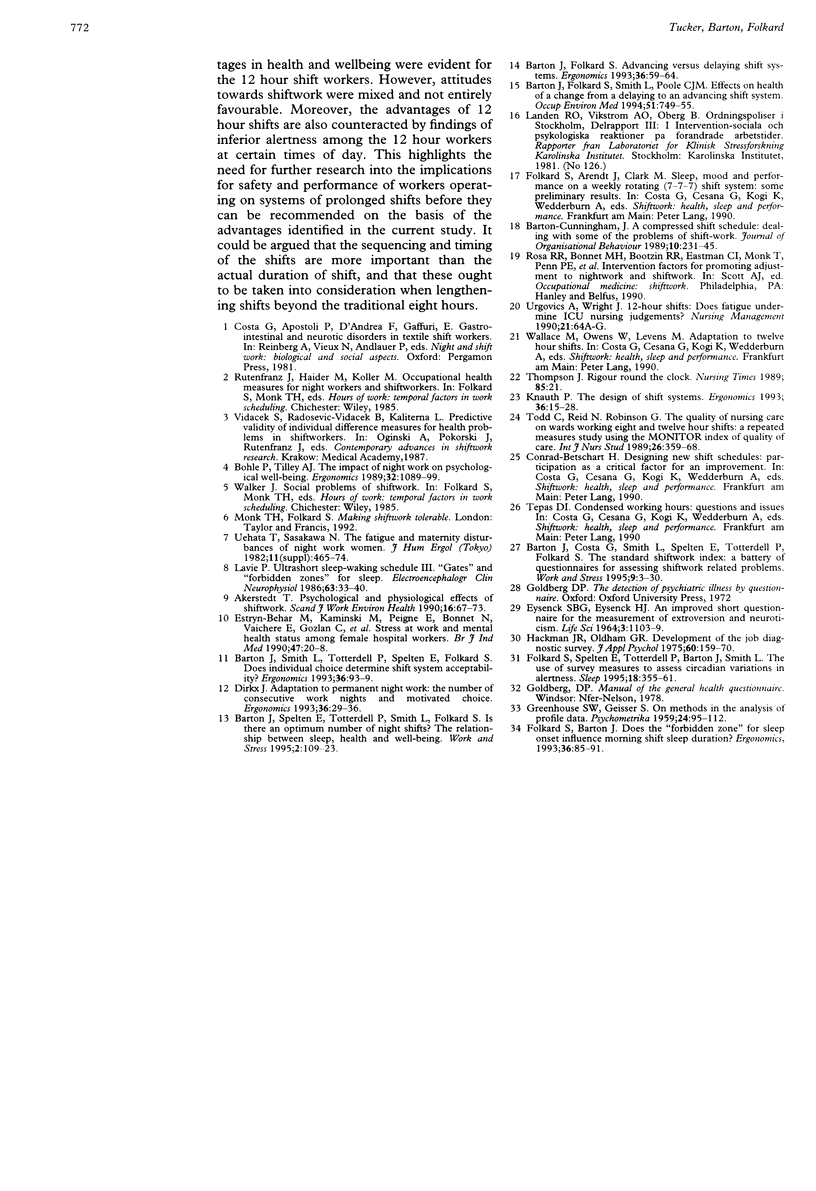
Selected References
These references are in PubMed. This may not be the complete list of references from this article.
- Akerstedt T. Psychological and psychophysiological effects of shift work. Scand J Work Environ Health. 1990;16 (Suppl 1):67–73. doi: 10.5271/sjweh.1819. [DOI] [PubMed] [Google Scholar]
- Barton J., Folkard S. Advancing versus delaying shift systems. Ergonomics. 1993 Jan-Mar;36(1-3):59–64. doi: 10.1080/00140139308967855. [DOI] [PubMed] [Google Scholar]
- Barton J., Folkard S., Smith L., Poole C. J. Effects on health of a change from a delaying to an advancing shift system. Occup Environ Med. 1994 Nov;51(11):749–755. doi: 10.1136/oem.51.11.749. [DOI] [PMC free article] [PubMed] [Google Scholar]
- Barton J., Spelten E., Totterdell P., Smith L., Folkard S. Is there an optimum number of night shifts? Relationship between sleep, health and well-being. Work Stress. 1995 Apr-Sep;9(2-3):109–123. doi: 10.1080/02678379508256545. [DOI] [PubMed] [Google Scholar]
- Bohle P., Tilley A. J. The impact of night work on psychological well-being. Ergonomics. 1989 Sep;32(9):1089–1099. doi: 10.1080/00140138908966876. [DOI] [PubMed] [Google Scholar]
- Dirkx J. Adaptation to permanent night work: the number of consecutive work nights and motivated choice. Ergonomics. 1993 Jan-Mar;36(1-3):29–36. doi: 10.1080/00140139308967851. [DOI] [PubMed] [Google Scholar]
- EYSENCK S. B., EYSENCK H. J. AN IMPROVED SHORT QUESTIONNAIRE FOR THE MEASUREMENT OF EXTRAVERSION AND NEUROTICISM. Life Sci. 1964 Oct;3:1103–1109. doi: 10.1016/0024-3205(64)90125-0. [DOI] [PubMed] [Google Scholar]
- Estryn-Behar M., Kaminski M., Peigne E., Bonnet N., Vaichere E., Gozlan C., Azoulay S., Giorgi M. Stress at work and mental health status among female hospital workers. Br J Ind Med. 1990 Jan;47(1):20–28. doi: 10.1136/oem.47.1.20. [DOI] [PMC free article] [PubMed] [Google Scholar]
- Folkard S., Barton J. Does the 'forbidden zone' for sleep onset influence morning shift sleep duration? Ergonomics. 1993 Jan-Mar;36(1-3):85–91. doi: 10.1080/00140139308967858. [DOI] [PubMed] [Google Scholar]
- Folkard S., Spelten E., Totterdell P., Barton J., Smith L. The use of survey measures to assess circadian variations in alertness. Sleep. 1995 Jun;18(5):355–361. doi: 10.1093/sleep/18.5.355. [DOI] [PubMed] [Google Scholar]
- Knauth P. The design of shift systems. Ergonomics. 1993 Jan-Mar;36(1-3):15–28. doi: 10.1080/00140139308967850. [DOI] [PubMed] [Google Scholar]
- Thompson J. Rigour round the clock. Nurs Times. 1989 May 3;85(18):21–21. [PubMed] [Google Scholar]
- Todd C., Reid N., Robinson G. The quality of nursing care on wards working eight and twelve hour shifts: a repeated measures study using the MONITOR index of quality of care. Int J Nurs Stud. 1989;26(4):359–368. doi: 10.1016/0020-7489(89)90021-7. [DOI] [PubMed] [Google Scholar]
- Uehata T., Sasakawa N. The fatigue and maternity disturbances of night workwomen. J Hum Ergol (Tokyo) 1982;11 (Suppl):465–474. [PubMed] [Google Scholar]


